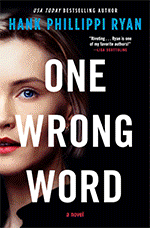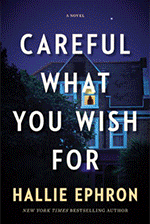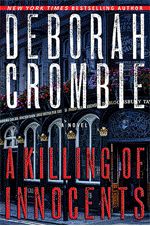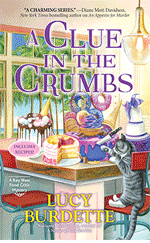RHYs BOWEN: Next week I'm going to New York for the Edgars. I haven't been in a couple of years. I can't say I miss it. I'm not a big city person. I like nature and quiet. But as cities go, New York has everything. It's a true city. Not a boring, bleak financial district and then suburbs and malls like many American cities. I probably won't do much when I'm there, as I have endless meals scheduled, but I may pop down to Greenwich Village where Molly hangs out. And if the weather is kind I'll certainly want to walk in Central Park. This is me in Patchin Place where Molly lives!
i've assembled some of the reasons why I like New York:
Since I’ve been an observer of New York, I’ve had a chance to detail what I like about it. Here are my top ten reasons for liking the city:
1. It is a true city where living, working, eating, shopping all take place on the same block. In other cities the commercial areas are dead after working hours. Not so New York. It lives twenty four hours a day.
2. Life is not confined to buildings. It spills out onto sidewalks and into parks. At the first sign of spring, tables and umbrellas come out onto sidewalks, people take their food into parks. They sit outside the public library playing chess. There are impromptu jazz bands and barbershop quartets in the subway at Grand Central and outdoor concerts in Central Park.
3. It is a city of artwork. There are mosaics in the subway stations—my favorite is the Alice in Wonderland motif at 50th Street. Look up and you’ll see Egyptian temples, art deco medallions, Greek columns and marble frescos, sometimes eight or ten floors above ground level. For whom were the art deco goddesses and marble pediments intended? Certainly not the pedestrians who walk below and never look up as they hurry to the nearest subway. Not always the inhabitants of buildings opposite as some of them face blank walls. I like to think of them as a little offering to the gods above.
4. It is a city of good smells. Every block has at least one good aroma wafting out of a café, or from a sidewalk cart—roasting coffee, frying onions, curry, sesame oil, baking bread. Luckily New Yorkers have to walk so much or they’d all be fat.
5. New York is a city of dogs. They are not much in evidence during the day, unless one encounters a dog walker, being dragged down Fifth Avenue by six or seven of her charges. But early evening, the dogs come out, each with his accompanying human, whom he often resembles in stature and walk. Interestingly enough, there are more big dogs than small. You would have thought that dachshunds and yorkies would have been ideal for city life, but I see more golden retrievers and labs and standard poodles, even Afghan hounds. New Yorkers are well trained too. Not a speck of poop in sight on the sidewalks.
6. It is a city of cheap eats and cheap shops. There are coffee shops all over where two dollars will buy an egg roll and coffee for breakfast. Even sushi bars offer two for one on weeknights. And T shirts with the famous I love NY slogan on them are now two for ten dollars. Of course I also saw a T shirt for three hundred dollars in Bloomies, so I have to say also that New York is…
7. …a city of contrasts. On the bus old ladies from the upper East Side wearing tired looking furs and smelling of face powder and moth balls sit next to young men in baggy pants, gang colors and caps worn backward. Sometimes they look at each other and smile.
The hot dog cart on the street is only a few steps away from the most pretentious tea salon in the universe. Their tea menu is twelve pages long. When I ask for a Darjeeling, I am directed to a page full of Darjeelings and a First Flush, Robertson Estate is recommended. I am so tempted to take a sip, look indignant and exclaim, “You’ve brought me a second flush, you imposter!”
8. It is a city of haste. Everything in New York is done quickly. People leap from sidewalks to snare cabs. They run down subway steps. They inch out into traffic and anticipate the Walk sign by a good two seconds. In Bryant Park outside the library men play chess at breakneck speed. Knight to bishop two-ding, and the timer bell is slapped, Queen to rook four-ding. The whole game is over in five minutes. A crowd of men stands around, watching.
9. It is also a city of quiet corners in which time stands still. There is a fair being held in a churchyard with home baked cookies and crocheted potholders. I once got locked, by mistake, in Gramercy park, which is the only private square in the city when I had stayed at the Gramercy Park hotel and gone there to regroup in the calm of nature. In Central Park proud moms and darker skinned nannies watch light skinned children play in the sand or climb the rocks. It is easy to get lost in Central Park, easy to forget that you are in a city at all.
10. And most surprisingly for one who has visited New York for the past thirty years---it is a city of friendly people. Everything changed after 9/11. These days people chat as they wait for buses. They see tourists puzzling over maps and ask if they need help. Bus drivers actually call out the name of streets intelligibly and answer questions when asked. A minor miracle has occurred—the one good by-product of a 9/11 that touched every New York life and forged and strengthened it with fire.
I'll be staying at the Marriott Marquis which has the scariest elevators in the world. All glass and plunge down forty something floors in seconds!
View from my hotel room last time here!
So are you a fan of New York? What do you like about it? Hate about it?







































